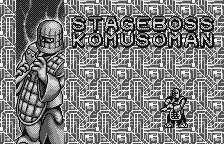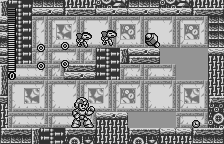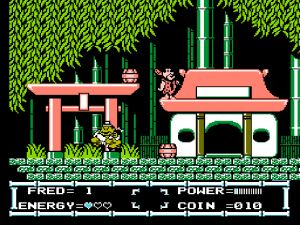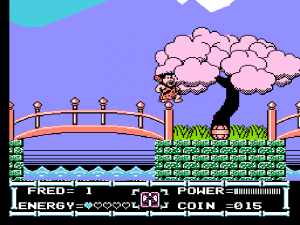The Pointless Samurai Level
Here’s an axiom of classic game design: the less effort that went into a Japanese-made video game, the greater the likelihood that game will contain a pointless Samurai-themed level.
I’ve got nothing against Samurai-levels, but they don’t belong in every game. By “pointless” I’m referring to a particular sort of ancient Japan-themed level that makes no real sense in the context of the game’s larger story or setting. A game that nominally takes place in modern-day America, for instance, should probably not include a jaunt through 17th Century Kyoto, but several do. Also, it seems a tad disingenuous for games with themed levels (the fire level, the water level, etc) to include a Samurai-themed level in the mix. Ancient Japan is not commonly regarded as one of the fundamental elements of reality.
I am not entirely sure what explains this phenomena. I suspect it has something to do with the fact that designers of uninspired games will, by definition, be fairly lazy, and therefore inclined to use settings and characters that already exist, rather than invent something fresh. Ancient Japan is a rich setting full of established tropes, props, characters, and settings, so it’s a natural choice for the uncreative. Particularly if you’re Japanese.
The Simpsons
(Arcade; Konami, 1991)
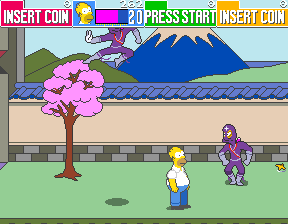
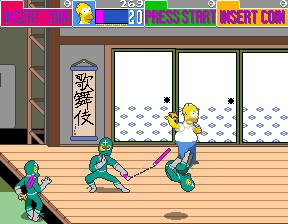
Stage 7 of The Simpsons arcade game is nominally set at Springfield’s Channel 6 TV studio, but halfway through the level quickly changes into ancient Japan, through the shallow pretext of having the characters stumble onto the set of a Japanese movie (or something). The stage boss is some manner of Kabuki actor. As a longtime Simpsons fan, I can say with some authority that this sequence is not particularly in tune with the spirit of the franchise.
Rockman & Forte: Mirai Kara no Chousensha
(WonderSwan; Lay-Up, 1999)
This long-forgotten title for the long-forgotten Bandai WonderSwan features one of the purest examples of this principle in action.
Capcom wanted a Mega Man game for the WonderSwan, but for whatever reason decided to outsource production to an obscure and inexperienced Japanese company no one had ever heard of. The result? Practically everything in it is unattractive, confusing, and sloppily designed. All of the game’s Robot Masters — usually the most creative and inspired characters in any Mega Man game — are dopey and strange to the point where they are all-but-banished from the official Capcom canon.
Among classics like “Air Conditioner Man” and “Compass Man” one of Rockman & Forte’s stranger robot masters is a guy called “Komuso Man,” Komuso (虚無僧) being a style of 17th Century Japanese monk known for their iconic basket-hats and flute-playing. Komuso Man resides in an ugly level that I believe is supposed to resemble a traditional Japanese paper-walled house.
Teenage Mutant Ninja Turtles II: The Arcade Game
(NES; Konami, 1990)
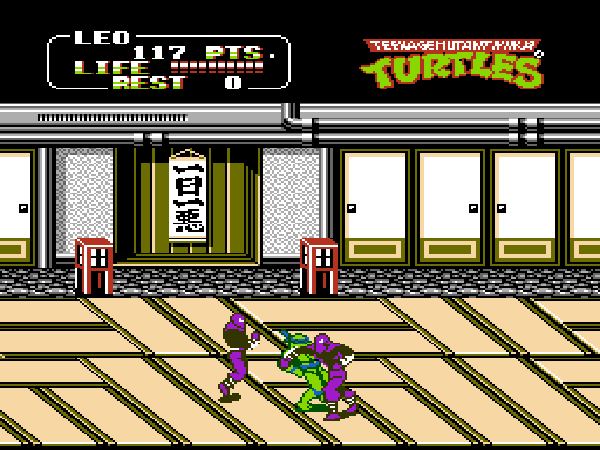
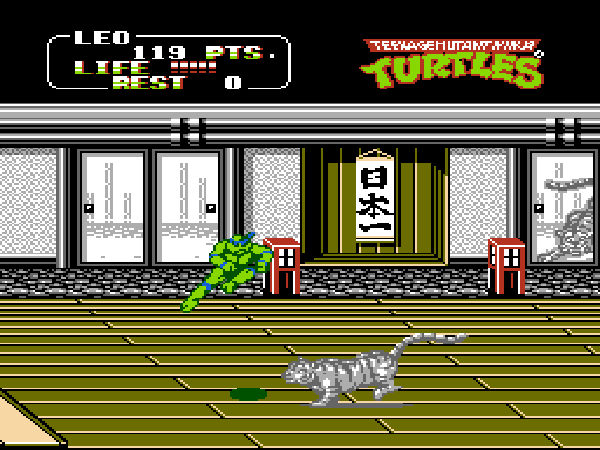
TMNT2 for the NES was an home console adaptation of the popular Ninja Turtles arcade game released the year prior. In order to keep the thing fresh, a few new levels were included for the NES release. This included a brand new Scene 6 with the wonderfully unsubtle title, “Let’s Defeat the Enemy’s Ninja Magic!!” It takes place in a stereotypical Edo-period Japanese home, and has a giant Samurai boss at the end. The wall calligraphy in that second screenshot reads “Japan.”
Teenage Mutant Ninja Turtles: The Hyperstone Heist
(Genesis; Konami, 1992)
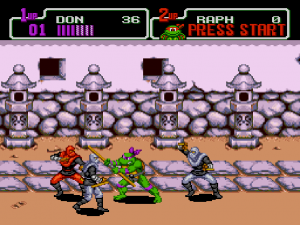
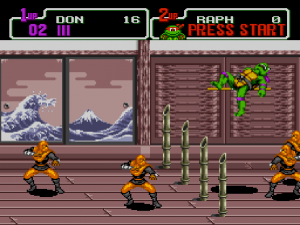
Another home console Turtles game that was largely based on an arcade game that came before it, in this case the 1991 hit Turtles in Time.
Several of the Genesis levels are brand new, including Scene 3, “Shredder’s Hideout,” which takes place in an ancient Japanese setting. Despite the title, Shredder himself does not appear, which only makes sense, as any good Turtles fan knows that Shredder lives in the Technodrome, not ancient Kyoto.
Populous
(SNES; Acclaim, EA, and Imagineer, 1991)
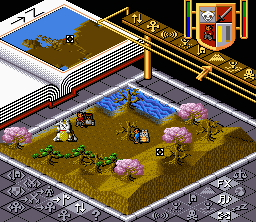
Populous is actually a British PC franchise, but responsibility for the Super Nintendo adaptation was farmed out to the Japanese company Imagineer, who added a few new levels. One of these — you guessed it — was Ancient Japan themed, called “Japanesque” in the English translation.
In fairness, Populous is a game of civilization-building, and the original PC version included several western-themed civilization levels such as “Wild West” and 18th Century France. The Japanese developers can be forgiven for adding a bit of cultural balance.
The Flintstones: The Rescue of Dino and Hoppy
(NES; Taito, 1991)
One of the later levels Fred visits in his quest to rescue his dino-pets is an island called “Tea Rock,” which is a some prehistoric caricature of pre-modern Japan. The end boss is a dinosaur sumo wrestler.


